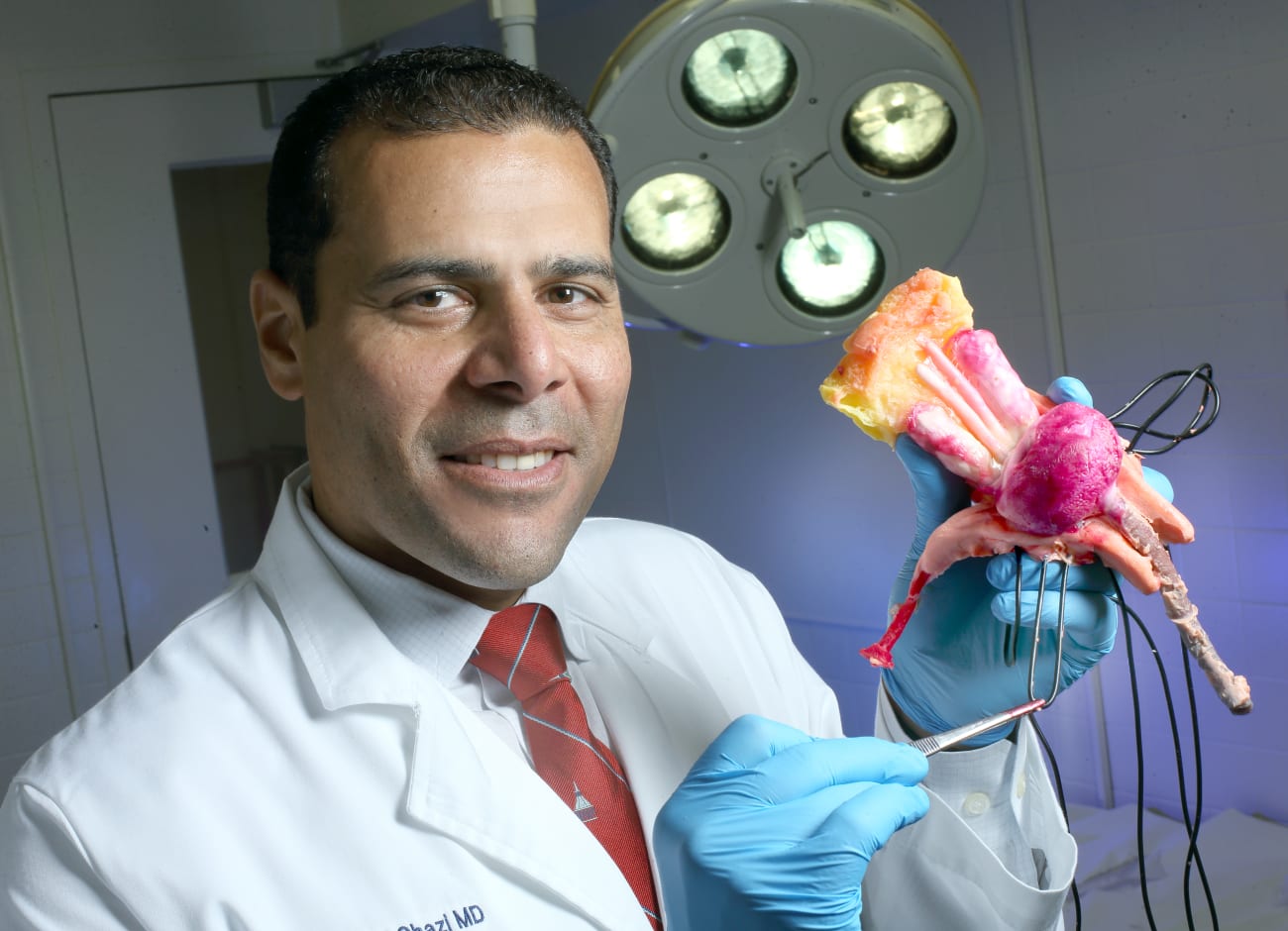When he did the actual surgery, Ghazi had a sense of déjà vu: “I’ve been here before. I recognize what I’m cutting through.” He even had muscle memory.
On his computer screen, urologist Ahmed Ghazi, M.B.B.Ch., M.D., is showing a strange video: a radical prostatectomy in double vision. The screen is split, and the operation seems to be shown in duplicate. On both sides of the screen, the robotic scalpel moves, the tissue bleeds, the bleeding is controlled, the prostate is removed, the nerves are spared, and the cancer is gone.
But here is the kicker, the jaw-dropping, “I never would have believed it!” part of the story: the left monitor shows an actual patient’s prostatectomy. On the right, the identical procedure is being done on an exact replica of that very prostate. This is not some Hollywood special effects contrivance or computer-generated imagery. It’s not virtual reality. Instead, it’s a custom 3-D printed and polymer-cast replica of a man’s prostate, using his CT scan and designed on 3-D segmentation software.
This model was injected with various consistencies of hydrogel to simulate tissue, fat, muscle, blood vessels, and filled with bodily-like fluids. It can bleed. This is amazing work, and Ghazi, who began developing these models years ago, has brought it to the Brady. The surgical model is so realistic that when looking at the side-by-side pictures on the screen, many surgeons can’t tell which is which. It is no exaggeration to say that the implications of this work are mighty, for expert surgeons as well as surgeons in training.
Ghazi, the Brady’s new Director of Minimally Invasive and Robotic Surgery, came to Hopkins from the University of Rochester. The first time he used this technology was just before he operated on a 69-year-old man with kidney cancer. The man had a large tumor that took up half of his left kidney and his right kidney was not functioning very well; he also had high blood pressure and was diabetic. If Ghazi couldn’t save his kidney, this man would need dialysis.
In preparation, Ghazi attempted the surgery on the pilot model his team had created – and failed. "To tell you the truth, at that point, I felt deflated. I was going to have to go to this patient and tell him that he would need to be on dialysis for the rest of his life." But Ghazi scrutinized the model, dissecting it to see if he could have done something differently. “I realized that there was this sweet spot, where I could remove the entire tumor with negative margins and stay away from those major vessels that were bleeding. I rehearsed the procedure over and over again, up until the night before his surgery.”
When he did the actual surgery, Ghazi had a sense of déjà vu: “I’ve been here before. I recognize what I’m cutting through.” He even had muscle memory. He performed the surgery in “an almost bloodless surgical plane, where I was able to successfully remove the tumor with negative margins while preserving the rest of the kidney with minimal blood loss, and that was because of the knowledge I got from these rehearsals.” More than two years later, the patient is tumor-free, not on dialysis, and back to normal life.
Ghazi has made models for other surgical patients, including men with prostate cancer needing radical prostatectomy. At the Brady, with funding from the Patrick C. Walsh Discovery and Learning Laboratory*, a program within the Surgical Learning and Innovation Center of Excellence (SLICE), Ghazi’s models will help surgeons plan and practice operations so they can safely remove cancers, minimize risks, and develop new surgical techniques and procedures.
“Ahmed’s work is fascinating because it is next-generation training,” says Mohamed Allaf, M.D., “not only for students and residents, but for experienced surgeons. If it’s a very difficult operation, we can rehearse it multiple times on these models, and potentially innovate a way to do an operation that might even have been thought to be impossible – have a better result, and make it more safe.”
For residents, because the models are so lifelike, they allow for unprecedented practice to learn the procedure and get it right. “While there are computer simulations, those feel more like a video game,” says Allaf. “The stakes aren’t as high, you don’t get the same feel, they don’t leak urine, they don’t bleed in real time, and blood on a screen doesn’t mean as much.” Ghazi’s work “is already making a difference here. How appropriate that at the Brady, where we pioneered the Urology residency program and training, in Dr. Walsh’s 50th year, we are redefining surgical training, with better outcomes and quality of life for our patients.”
*Money raised for this project will fund education and research at SLICE.

